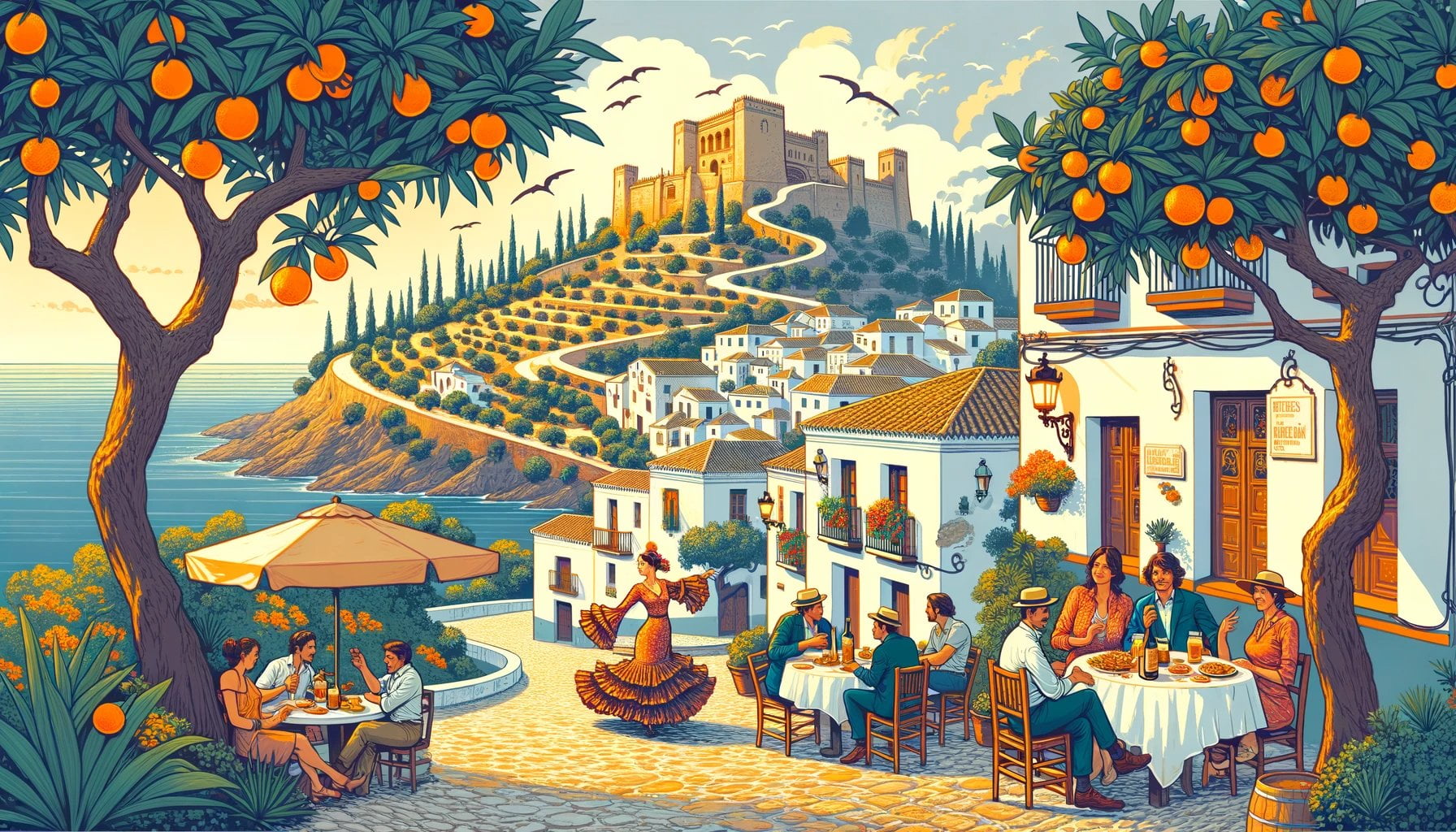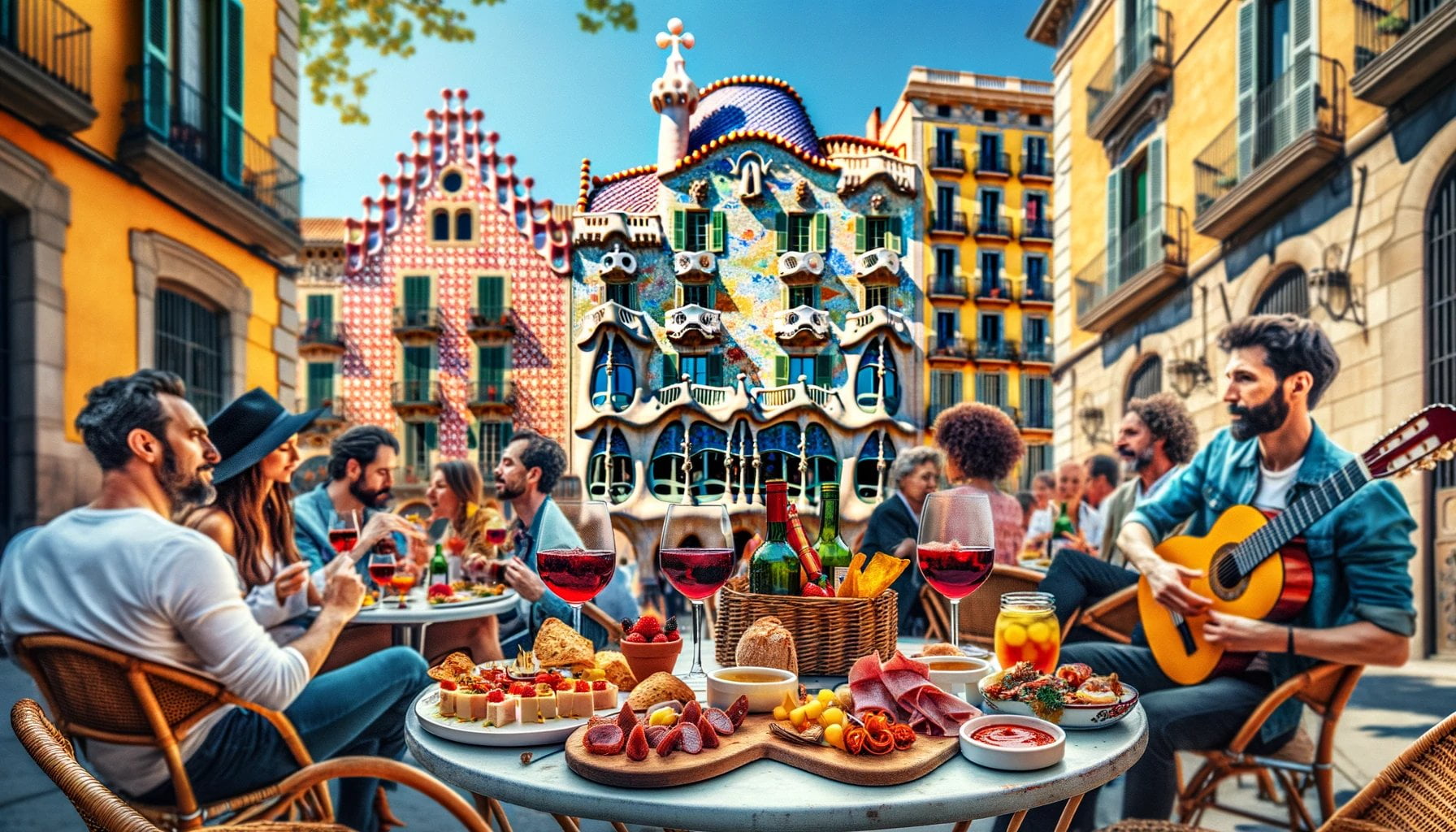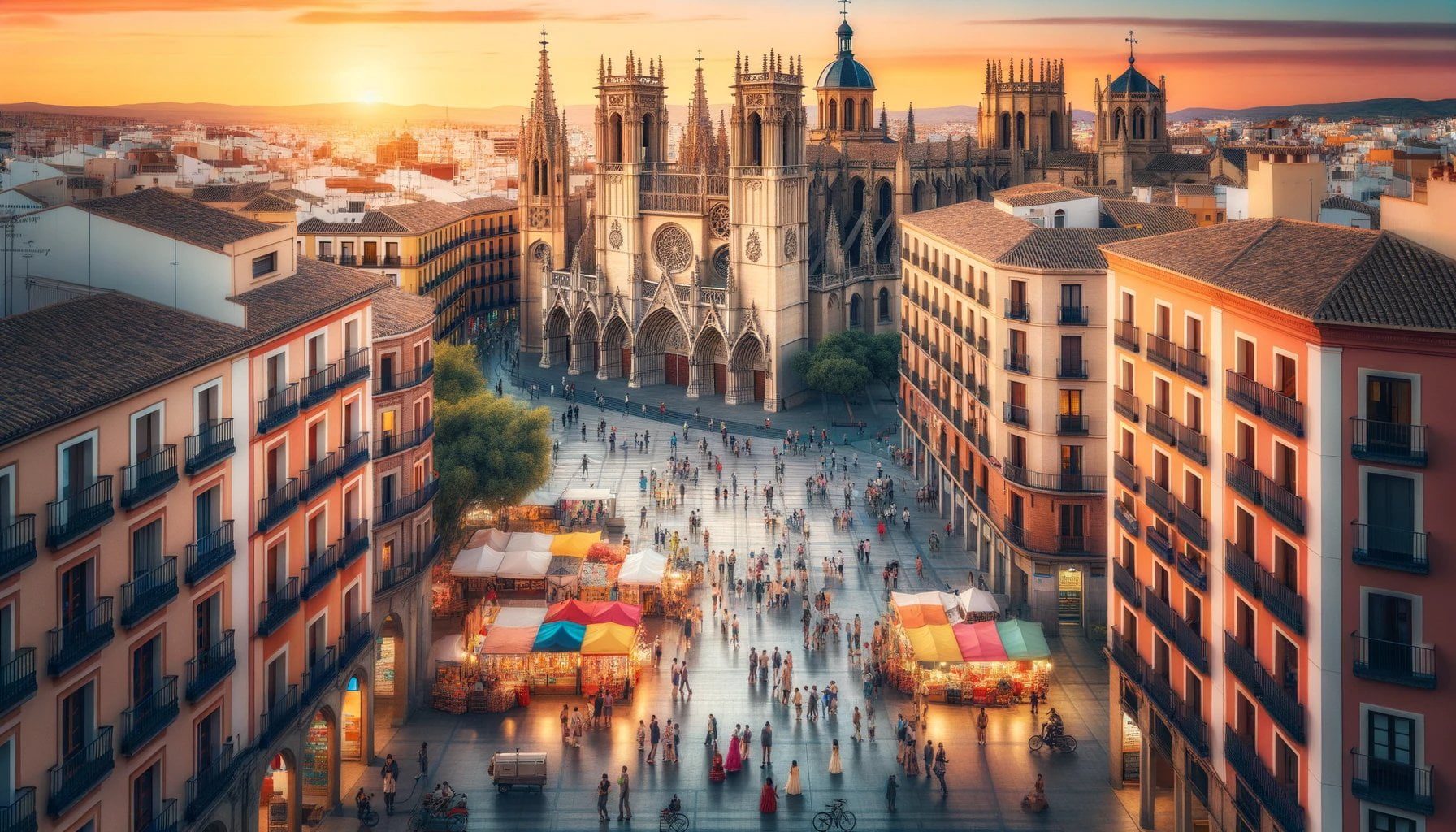Discover the enchanting allure of Spain through its rich history, cultural traditions, and breathtaking landscapes. From the captivating charm of its ancient cities to the vibrant tapestry of its art and gastronomy, there is something truly captivating about this Mediterranean gem. Join us as we delve into the wonders of Spain, exploring the unique experiences and hidden gems that make this country an endlessly fascinating destination.

Key Takeaways:
- Spain offers stunningly well-preserved architecture and historical landmarks, making it an interesting destination for history enthusiasts.
- The Mediterranean atmosphere in Spain adds to its charm and creates a relaxed and enjoyable experience for visitors.
- With a diverse landscape that includes sandy beaches, snow-capped mountains, and rolling plains, Spain has something to offer for every type of traveler.
- The country is known for its delicious food and passionate culture, with a wide variety of dishes to indulge in and vibrant festivals to immerse oneself in.
- Major cities like Madrid, Barcelona, and Valencia provide unique traditions, languages, and must-see sites for tourists to explore.
- Spain’s history is fascinating and can be discovered through its well-preserved buildings and museums.
- From striking architecture to world-famous cuisine and fantastic museums, Spain offers a rich cultural experience.
- The country’s sophistication is reflected in its cities, while the countryside is known for its citrus and olive groves.
- Spain’s delectable sangria and choice rioja wines are worth trying.
- The stunning natural beauty of Spain makes it a popular destination for travelers from all over the world.
Why is Spain so interesting?
Spain is a country that never fails to captivate visitors with its rich history, vibrant culture, and breathtaking landscapes. From stunning architecture to delicious cuisine, Spain offers a truly unique and unforgettable experience. So, what makes Spain so interesting? Let’s explore the reasons why this Mediterranean gem is a must-visit destination.
A Tapestry of History and Architecture
Step into Spain, and you’ll find yourself surrounded by a tapestry of history and architectural wonders. From the grandeur of the Alhambra in Granada to the iconic Sagrada Familia in Barcelona, Spain’s well-preserved landmarks transport you through time. The blend of Moorish, Gothic, Renaissance, and Modernist influences creates a mesmerizing architectural narrative that tells the story of Spain’s rich past. Every cathedral, castle, and palace has a tale to tell, making exploration a journey of discovery.
Cultural Traditions and Passion
Spain is a country that pulses with passion and celebrates its cultural traditions with fervor. From flamenco dancing to bullfighting, Spain’s cultural heritage is deeply ingrained in its people. Witnessing traditional festivals like La Fallas or participating in the tomato-throwing madness of La Tomatina is an opportunity to immerse yourself in the authentic spirit of Spain. The warmth and vibrancy of the Spanish people make every encounter a memorable one, creating a genuine connection with the country’s soul.
Diverse Landscapes for Every Adventure
Spain offers a diverse array of landscapes, catering to every adventurer’s desires. Whether you’re a beach lover, a mountain enthusiast, or a fan of rolling plains, Spain has it all. The country’s sandy beaches along the Mediterranean and Atlantic coasts provide idyllic spots to soak up the sun. If you prefer snow-capped peaks and thrilling winter sports, the Sierra Nevada and Pyrenees mountains beckon. And let’s not forget the enchanting countryside, with its picturesque olive and citrus groves. In Spain, there’s a natural paradise waiting for you around every corner.
Gastronomic Delights to Savor
For foodies, Spain is a gastronomic paradise that will tantalize your taste buds. From tapas to paella, Spain’s cuisine is renowned for its incredible flavors and innovative combinations. Indulge in succulent jamón ibérico, fresh seafood paella, and traditional churros dipped in rich chocolate. The country’s wine regions, such as Rioja, offer a chance to savor fine wines that perfectly complement the delectable dishes. The Spanish know how to savor life through food, and their culinary delights will leave you craving for more.
Artistic Inspiration Everywhere
Spain has long been a muse for artists and creative minds. The works of renowned artists like Gaudí, Picasso, and Dalí are ingrained in the Spanish culture and can be admired in museums throughout the country. From the modernist marvels of Barcelona to the world-class museums of Madrid, Spain is a treasure trove of artistic inspiration. The unique blend of art, architecture, and cultural heritage creates an ambiance of creativity that permeates every corner of the country.
In conclusion, Spain’s captivating charm lies in its rich history, cultural traditions, and beautiful landscapes. Whether you’re exploring the architectural wonders, embracing the passionate culture, savoring the delicious cuisine, or immersing yourself in artistic inspiration, Spain offers a unique and unforgettable experience. So, pack your bags and embark on a journey to uncover the endless fascination of this Mediterranean gem.
Are you curious to learn 5 fascinating facts about Spain? Click here to uncover some surprising information about this vibrant country: 5 facts about spain.
Have you ever wondered what Spain is famous for? Discover the answer to this intriguing question by clicking on the following link: For what Spain is famous for?.
Prepare to be enchanted by the beauty of Spain! Click here to find out what makes this country so breathtaking: What is beautiful about Spain?.
Architectural Wonders from Gothic to Modernist
Spain is a country renowned for its architectural wonders, spanning centuries and encompassing a diverse range of styles. From Gothic masterpieces to modernist marvels, the architectural legacy of Spain showcases the country’s rich history, artistic brilliance, and cultural diversity.
The Influence of Gothic and Baroque Architecture
One of the most fascinating aspects of Spain’s architectural heritage is its Gothic and Baroque styles. During the Late Medieval period, Spain embraced these architectural forms, drawing inspiration from Central European influences. This resulted in the creation of magnificent structures such as the León Cathedral, which exemplifies the distinctive Levantine and Isabelline Gothic styles.
The Unconventional Genius of Antoni Gaudí
No discussion of Spanish architecture is complete without mentioning the unparalleled genius of Antoni Gaudí. This Spanish architect, who thrived in the early 20th century, left an indelible mark on the world with his unconventional and visionary designs. Gaudí’s architectural approach blended various influences, including the Mudéjar style, which harmoniously fused Islamic and Christian elements. The masterpiece of Gaudí’s work is arguably the unparalleled Sagrada Familia in Barcelona, an ongoing project that epitomizes the marriage of Gothic and modernist styles.
Picasso Museum and Its Impact on Modernism
While primarily known for his groundbreaking art, Pablo Picasso’s influence extends to the world of architecture as well. The Picasso Museum in Paris not only showcases his remarkable artistic journey but also highlights his profound impact on modernism. With his innovative and boundary-pushing approach, Picasso’s artistic vision opened new possibilities for other architects and artists, allowing them to challenge conventions and explore new creative realms.
Spanish Filmmakers and Cinematic Expression
In addition to its architectural grandeur, Spain is also a hub for cinematic expression. Filmmakers like Carlos Saura have played a pivotal role in exploring Spanish culture and history through their colorful and imaginative films. The Spanish Film Festival further promotes the appreciation and evaluation of cinema from various genres and countries, fostering a vibrant artistic community that continues to shape and inspire.
Modern Architectural Marvels
Spain’s fascination with architecture doesn’t end with its historical wonders. The country also boasts a plethora of modern architectural marvels. From the avant-garde design of Casa Batllo to the sleek and minimalist San Juan Bautista Church, these structures represent the forefront of contemporary architectural innovation. Spain’s ability to seamlessly blend ancient traditions with modern aesthetics is a testament to its architectural prowess.
Key Takeaways:
- Spain’s architectural heritage is a testament to the country’s rich history, artistic brilliance, and cultural diversity.
- Gothic and Baroque styles played a significant role during the Late Medieval period, resulting in iconic structures influenced by Central European architecture.
- Antoni Gaudí’s unconventional approach to architecture, blending diverse influences, created a unique style and left an indelible mark on the world.
- The Picasso Museum highlights the artist’s impact on modernism and showcases his journey of artistic exploration.
- Spanish filmmakers like Carlos Saura have contributed significantly to the world of cinema, exploring Spanish culture and history through their imaginative films.
- Spain’s modern architectural wonders combine innovative design with a profound respect for tradition, resulting in awe-inspiring structures.
Sources:
– Encyclopedia Britannica (Citation: Encyclopedia Britannica)
– Wikipedia (Citation: Wikipedia)
Gastryonomy and Culinary Delights: A Journey Through Spain’s Vibrant Food Culture
Spain, with its rich history, cultural traditions, and beautiful landscapes, has always been a fascinating destination. Yet, there is another captivating aspect of this Mediterranean gem that often goes unnoticed—the culinary delights that await food lovers. Spanning from traditional tapas to innovative molecular gastronomy, Spain’s gastronomy offers a delightful combination of flavors, techniques, and cultural influences.
From Traditional to Cutting-Edge: Exploring Spain’s Diverse Gastronomy
Spanish cuisine is incredibly diverse, and each region has its own specialties that reflect local traditions and ingredients. The country’s culinary landscape is a captivating tapestry that ranges from the world-famous paella in Valencia to the tantalizing pintxos in the Basque Country. Whether it’s the sizzling chorizo in Andalusia or the creamy gazpacho in Seville, Spain offers an exquisite variety of dishes that showcase its rich culinary heritage.
A Symbol of Social Connection: Food and the Family Network
In Spain, food holds a profound significance beyond just sustenance. It plays a central role in social structures, particularly within the family network. Gathering around the table for proper sit-down meals is a cherished tradition. It is customary for family members to engage in long conversations, known as sobremesas, after a weekend meal. This emphasis on togetherness and connection around food is a testament to the importance of gastronomy in Spanish culture.
The Pride of Regional Specialties: A Culinary Competition
One of the fascinating aspects of Spanish gastronomy is the fierce culinary competition among regions. Precious dishes often bear the name of specific regions, highlighting the pride and identity attached to local cuisine. This regional rivalry creates a vibrant culinary scene, with each area striving to showcase the best of its culinary traditions. It is no wonder that Spain boasts over 13 Michelin-starred restaurants in San Sebastian alone.
A Culinary Past Enriched by the World: Historical Influences
Spain’s rich culinary history has been shaped by centuries of influences from around the world. Spanish explorers and colonizers brought back novel foods from their expeditions, such as potatoes, tomatoes, and avocados. These exotic ingredients had a profound impact on the diverse culinary landscape of the country. Today, Spain’s gastronomy continues to evolve, blending its traditional roots with innovative cooking techniques and global influences.
Savoring the Delicacies: Iconic Elements of Spanish Gastronomy
No exploration of Spanish gastronomy would be complete without indulging in its iconic elements. Cured meats, particularly jamón serrano and jamón ibérico, are national delicacies that are enjoyed throughout the country. The meticulous process of curing and aging these hams yields an unparalleled depth of flavor. Spain’s commitment to quality is further exemplified by its award-winning cheeses, variety of wines and sherries, and abundant use of olive oil. Every bite and sip in Spain tells a story of craftsmanship and dedication to preserving culinary traditions.
An Ever-Growing Recognition: Spain’s Global Influence
Spain’s contribution to the world of gastronomy extends far beyond its borders. The Mediterranean diet, with its emphasis on fresh ingredients and healthy eating, is a shining example of Spain’s culinary export. Gazpacho, the refreshing cold tomato soup, has become an international sensation, showcasing the vibrant flavors of Spanish cuisine. Additionally, tapas, those small dishes bursting with flavor, have gained immense popularity worldwide. Spain’s culinary influence has inspired chefs from all corners of the globe, and its gastronomic innovations continue to captivate the culinary world.
Key Takeaways:
- Spain’s gastronomy offers a delightful combination of flavors, techniques, and cultural influences.
- Food plays a central role in social structures in Spain, with proper sit-down meals and long conversations.
- Spain’s diverse culinary landscape showcases regional specialties and creates a fierce culinary competition.
- Spanish cuisine has been enriched by historical influences and ingredients brought from around the world.
- Iconic elements of Spanish gastronomy, such as cured meats and award-winning cheeses, highlight the country’s commitment to quality.
- Spain’s gastronomic contributions, including the Mediterranean diet and tapas, have gained global recognition and influenced chefs worldwide.
Sources:
- Vamos Spanish. “Spanish and Gastronomy: The Culinary Vocabulary of Spain”
- Spain Guides. “Gastronomy of Spain – Appetising Healthy & Delicious”
Breathtaking Landscapes from Beaches to Mountains
Spain is a country that never fails to leave visitors in awe with its diverse and breathtaking landscapes. From golden sandy beaches to majestic mountains that touch the sky, Spain offers a natural wonderland that is sure to captivate any traveler. In this article, we will delve into the spellbinding beauty of Spain’s landscapes, exploring everything from its stunning coastlines to its awe-inspiring mountain ranges.
Coastal Paradise: Beaches that Take Your Breath Away
When it comes to beaches, Spain boasts some of the most exquisite and picturesque in the world. The Mediterranean coast, with its crystal-clear waters and pristine sands, is home to a plethora of stunning beach destinations. Whether you visit the charming Costa Brava or the idyllic Costa Blanca, you’ll be greeted by breathtaking stretches of shoreline that beckon you to unwind and relax. [Breathtaking landscapes from beaches to mountains].
For those seeking a touch of paradise, the Costa del Sol is a must-visit. With its sun-drenched beaches, lined with palm trees and vibrant promenades, it’s easy to see why this region attracts millions of visitors each year. And let’s not forget Tarifa Beach, a surfer’s paradise that offers an adrenaline-pumping experience with its strong winds and impressive waves. The Spanish coastline truly offers landscapes that will leave you speechless.
Mountains: Where Adventure and Beauty Converge
Beyond its stunning coastlines, Spain is also blessed with majestic mountain ranges that provide a playground for adventure enthusiasts and nature lovers alike. Picture yourself standing atop snow-capped peaks, breathing in the crisp mountain air, and being surrounded by breathtaking vistas.
One of Spain’s most famous mountain ranges is the Sierra Nevada, which is located in the region of Andalusia. This natural wonderland is not only a paradise for skiers and snowboarders during the winter months but also offers countless hiking trails and stunning landscapes to explore all year round. Whether you are a seasoned mountaineer or a casual hiker, the Sierra Nevada will leave you in awe of its natural beauty.
But the beauty doesn’t stop there – the Pyrenees, located in the north of Spain, offer a different kind of mountain experience. With its lush green valleys, gushing rivers, and charming alpine villages, this region is perfect for those seeking a peaceful retreat amidst nature’s wonders. [Breathtaking landscapes from beaches to mountains].
Hidden Gems: From Deserts to Waterfalls
Spain is also home to lesser-known natural gems that promise to leave you astounded. The Cabo de Gata-Níjar Natural Park in Almeria and the Tabernas Desert are hidden treasures in Andalucia that showcase unique landscapes reminiscent of a desert oasis. Here, you can marvel at the natural rock formations and explore the rugged terrains that are unlike anything you’ve seen before.
If you’re a fan of waterfalls, a visit to Pozo de los Humos in Salamanca is a must. Tumbling gracefully down the rocks, this mesmerizing waterfall is a sight to behold, offering a tranquil respite from the hustle and bustle of everyday life.
Key Takeaways:
- Spain’s diverse landscapes encompass everything from stunning beaches to majestic mountains.
- The Mediterranean coast offers picturesque beaches like the Costa Brava, Costa Blanca, Costa del Sol, and Tarifa Beach.
- The Sierra Nevada and the Pyrenees are mountain ranges that provide adventure and beauty in equal measure.
- Hidden natural gems in Spain include the Cabo de Gata-Níjar Natural Park, the Tabernas Desert, and the Pozo de los Humos waterfall.
Sources:
– My Little World of Travelling
– Backpacking Man

FAQ
Q1: What makes Spain’s architecture unique and influential?
A1: Spain’s architecture is unique and influential because it showcases the Gothic and Baroque styles, which were prevalent during the Late Medieval period. These styles were influenced by Central European architecture, resulting in stunning and distinctive structures.
Q2: Who is Antoni Gaudí and what is his contribution to Spanish architecture?
A2: Antoni Gaudí is a famous Spanish architect known for his unconventional and visionary approach to architecture. His eclectic style, influenced by the Mudéjar blend of Islamic and Christian architectural influences, created unique and iconic buildings such as the Sagrada Familia in Barcelona.
Q3: What can I expect to see at the Picasso Museum in Spain?
A3: The Picasso Museum in Spain is dedicated to showcasing the works of renowned Spanish artist Pablo Picasso. Visitors can expect to see a collection of his paintings, sculptures, ceramics, and drawings, which highlight his contributions to the art world and his impact on modernism.
Q4: Who is Carlos Saura and why is he important in the world of cinema?
A4: Carlos Saura is a Spanish filmmaker known for his imaginative and colorful films that explore Spanish culture and history. His works have made him an influential figure in the world of cinema, and he is recognized for his contributions to storytelling and the visual arts.
Q5: What is the Spanish Film Festival and what can I expect from it?
A5: The Spanish Film Festival is an annual event held in Spain that attracts filmmakers and cinema enthusiasts from around the world. It serves as a platform for the evaluation and appreciation of films from various genres and countries, offering a diverse selection of films and a vibrant atmosphere for attendees.
- Sept 31 Myth: Unveiling Calendar Secrets - March 18, 2025
- How Long & Till December 18, 2025: Accurate Countdown Guide - March 18, 2025
- Discover Japanese Artists: A Complete History - March 18, 2025
















